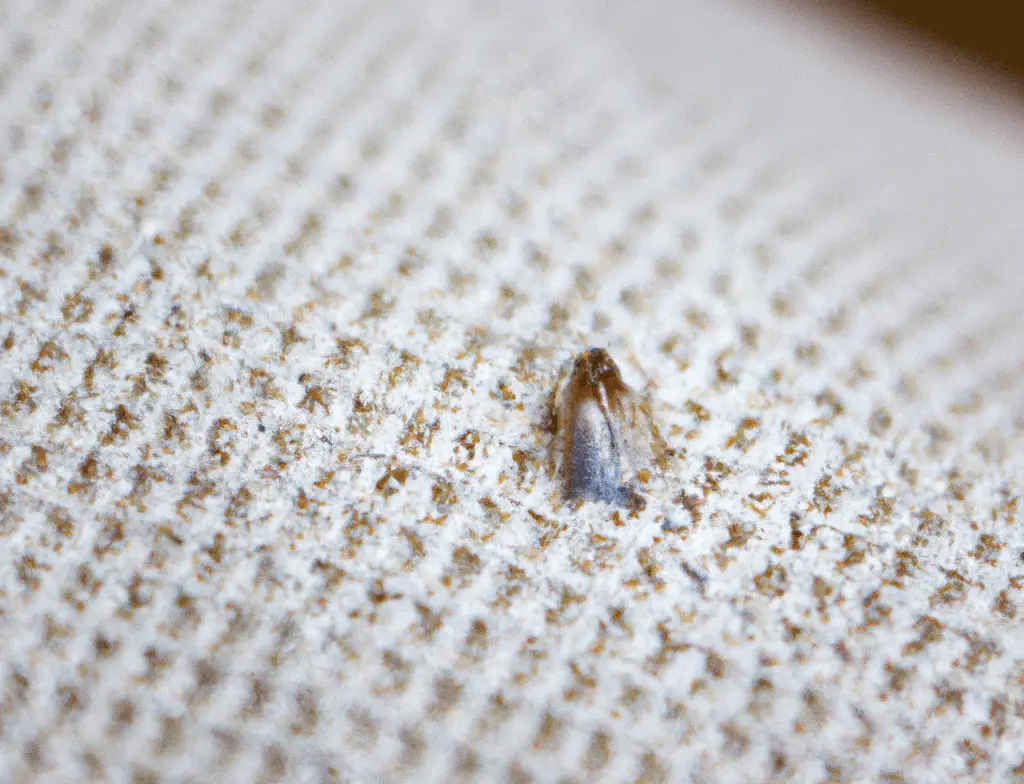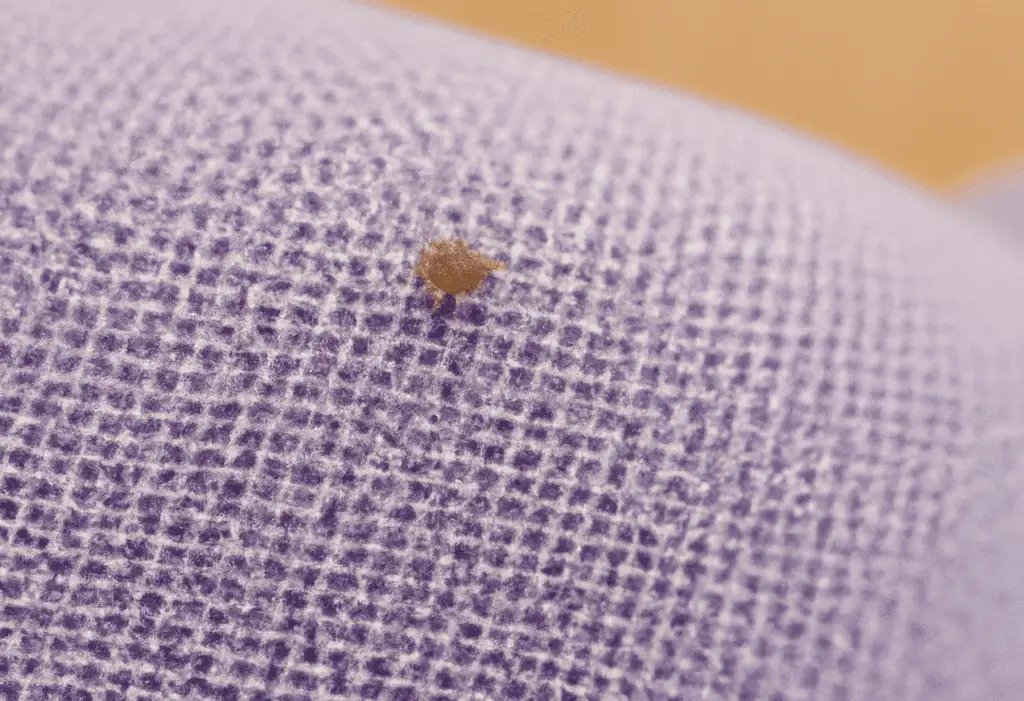Whenever there has been a flea infestation in my home, I always try to figure out what brought the original adult fleas inside. Common culprits are pet fur, pet bedding, boxes or items brought in from outdoor storage, and even wild animals roaming on our lawns.
Fleas can hop and travel far to find meals, and entering your home is no difficult task for a determined female flea.
Quick Answer:
Humans can temporarily carry fleas on clothes. Fleas can jump onto your clothing in infested areas but prefer pet hosts for feeding and reproduction. After being in an infested area, it’s advisable to wash your clothes thoroughly to prevent bringing fleas into your home.
With all the ways fleas can wander in on their own, it might be even more unsettling to know that its possible fleas could travel on our clothes as well. Whether helping a friend move, doing some yard work, or just going for a walk in the park, fleas could be grabbing onto your clothes and finding their way into your home.
To understand how real this risk is to spread flea infestations via clothes, read the information below.
Can Fleas Travel On Clothes?
It is far easier for fleas to grab onto clothes and then hide in seams and stitching to get inside your homes. You may not get flea bites through jeans or thick fabrics, but they can bite through thin fabrics like yoga pants and tights.
But all types of fleas can and will grab onto your clothes and hitch a ride to a steady food source where flea eggs and flea larvae can grow into adult fleas.
If there are signs of fleas where you are, make sure to wash clothes from storage and outdoor yardwork with hot water before putting them in drawers and closets. This will prevent fleas from hitchhiking into your bedroom, where they can find food for ages. Keeping clothes in an air-tight bag for 48 hours can also get rid of fleas if washing isn’t an option.
Can Fleas Live on Clothes?
For a limited amount of time, it is possible for fleas to live on clothes. Unless previous chemical treatments, like insecticide sprays, have been applied, landing on and hiding in clothing will not kill these pests. Although they might hide in them, adult fleas will leave clothes when a food source is located but will hide there when needed.
Once female fleas have found a potential host, they can survive for an extended period with infrequent feedings and will survive as long as 100 days if they have access to blood. It won’t take long for pests on clothes to fill the house with fleas since common fleas lay a lot of eggs very quickly.
Once a female flea drinks the blood of animals or humans, she will start laying eggs within 48 hours of the blood meal and continue for the next 9 days. In that time, these annoying pests can lay as many as 24 to 30 eggs.
Most fleas will latch onto clothes below our waists when we walk through tall grass or flea-infested areas. itchy spots on ankles are common, as are itchy bites on feet unless closed-toe shoes are warm. Long-sleeve clothing can stop bites from fleas, but they might chomp through thin tight clothes like yoga pants and tights.
Without access to blood, fleas won’t survive on clothes for more than 2 weeks, but flea eggs, flea larvae, and adult fleas on people can exist on clothes for a period of time.
Ways Fleas Travel

Fleas can travel around in all kinds of manner and use any available avenue to get inside and find blood meals. In some cases, the fleas that enter our homes and bite our skin enter in several different ways, or at least their ancestors did.
Before conditions get bad enough that you need to call a pest control service for biting insect treatment, let’s look at the common ways fleas get into homes.
| Travel Method | Effectiveness | How Common |
| Clothes | Very Common | Very Common |
| Hair and Fur | Very Common | Very Common |
| Storage Items | Somewhat Common | Somewhat Common |
| Toys and Outdoor Accessories | Somewhat Common | Somewhat Common |
| Jumping | Very Common | Very Common |
Attach
Clothes, fur, and skin are some examples of objects fleas will attach to. their bodies are small and light and can easily latch onto clothing and people’s skin. Fleas will also attach to anything being carried into a house, like furniture, and can hop onto shoes and socks while passing through tall grass. Without question, anything a flea can grab onto that brings it closer to a blood meal and laying flea eggs is subject to attachment.
Stowaway
Fleas can live for a long time off of adult flea dirt and grime on old clothing. Even old skin flakes on the floor or in furniture and drawers can keep fleas at the larval stage alive and well. As their little bodies grow, fleas may jump onto clothing to give females a host they can feed on.
Jump
Unlike some blood drinkers that rely on extreme aim to land on a host, for example, ticks, fleas can and do travel singing their extremely powerful legs. If you walk through the grass with fleas, not only are your shoes a potential target but anywhere under your waist is within reach of these springing pests.
Even on their own, these black insects may just jump into your house through a window or door opening in the hunt for body warmth and access to blood meals.
Can Fleas Travel In Luggage and Bags?
Fleas coming from outdoor vacations, hotels, or an infested house can hitchhike in bags and get into your room and bed fast. Even if you were unaware there were fleas, the time in the luggage could have allowed a generation to hatch, and as you unpack, you could be inviting a swarm of biting insects directly into your room.
Since fleas will end up on any surface and clothing item they can, luggage and bags from a flea-ridden travel experience are more than likely carrying these annoying pests home with you.
To help avoid and kill fleas in your luggage, pack your bags with flea deterrents and spray insecticide when packing and unpacking. If you are able to kill the fleas before they can get into or out of the bags, then you can stop them from spreading.
Some natural pesticides can be added to luggage to safely repel or kill any fleas that try to get inside. Washing clothes with warm soapy water before placing them in your drawers and closest can also kill any hitchhiking fleas.
How to Get Fleas off of Clothes?
If you know there are fleas on your clothes; you can act quickly to make sure you don’t bring them inside or contaminate any more of your home with these persistent pests. In order to quickly kill and remove fleas from your clothes, try these steps below.
Spray Flea Repellant
Applying a flea treatment before and after going out for yard work or walking in tall grass can help avoid bringing adult fleas into your home. Even a good natural repellent can go a long way in helping keep your clothes flea-free. Be careful not to directly inhale any pesticide sprays you’re using to keep fleas off, or you could become ill.
Treat your Pets
Animals without flea and tick treatments are the leading reason homes get infested. Dogs are more likely to bring fleas in with their toys and bedding, but cats can bring in dead animals, which may be flea infested. Help keep the biting and disease-carrying insects from getting your pets with flea medication for dog and cat fleas for all life stages.
Treat your Yard
General broad-spectrum pesticides for yard pests like fleas, ticks, mosquitos, ants, and termites can be applied to reduce the chance of bugs grabbing onto your clothes. If your yard is more or less free of pests and that is the main place you, your kids, and your animals spend their time, then you will have a greatly reduced likelihood of fleas entering your home.
Wash and Dry Fabrics
Any clothes that are exposed to or suspected to have been exposed to fleas can be placed in an airtight bag for at least 48 hrs if immediate washing isn’t possible. This can sometimes suffocate or at least slow down the spread of fleas. Vacuums and lint rollers can also be effective screening tools to reduce the number of pests that come inside.
Clean all bedding and blankets that came in contact with the flea-infested clothes as well as the infested clothes themselves in hot soapy water. A standard wash cycle with these settings should kill all adult fleas. The dryer on high will finish off any eggs that survived and ensure the fabrics make it back to your room without carrying any fleas into your home and bedroom.


